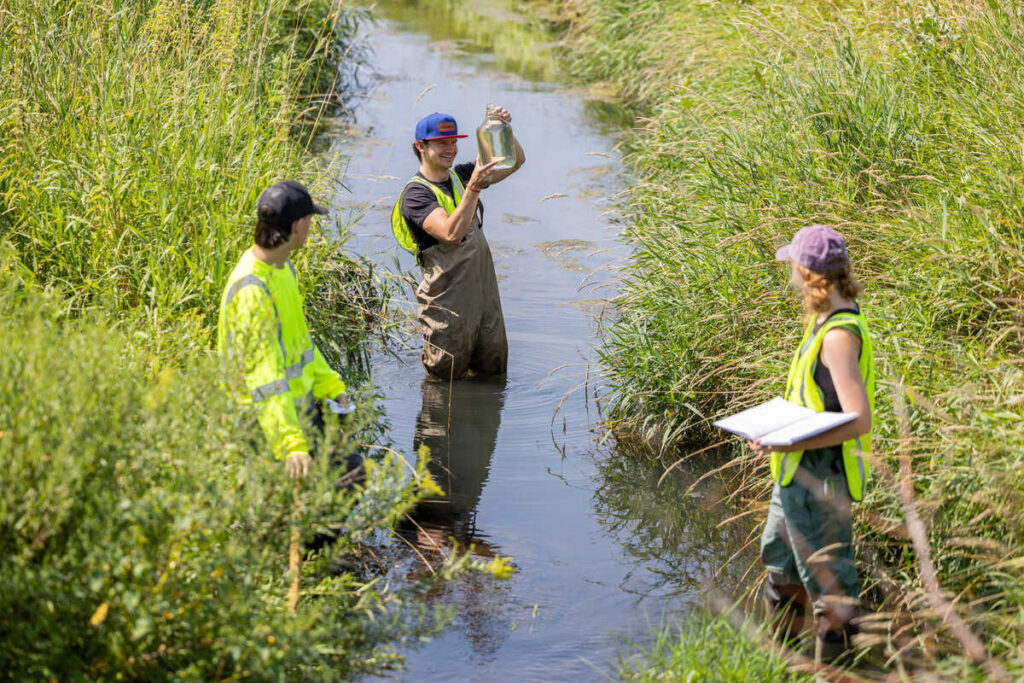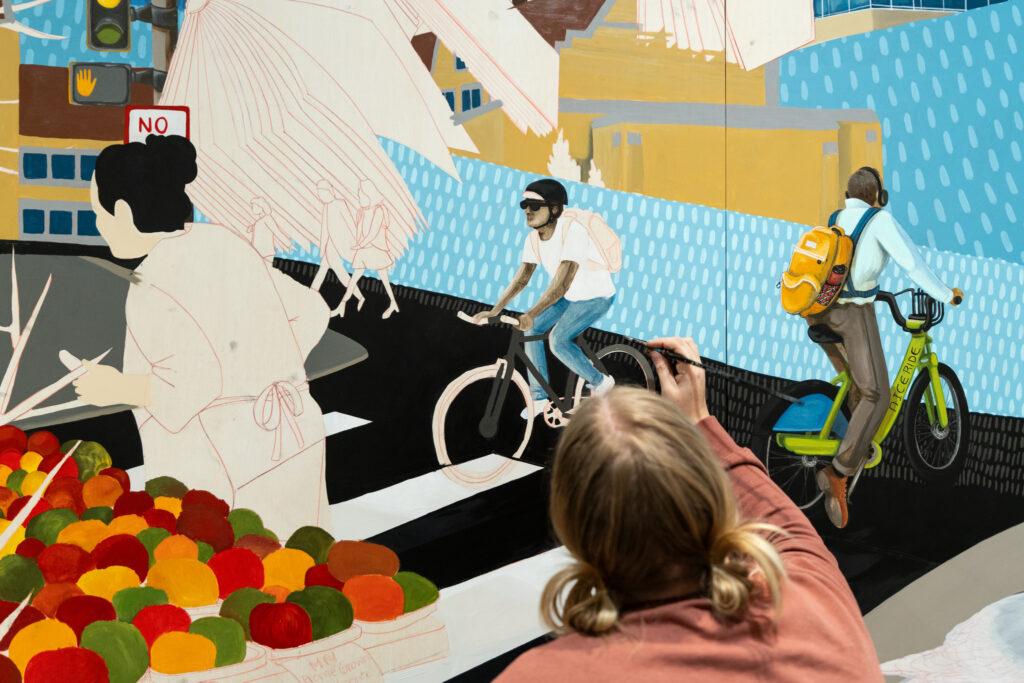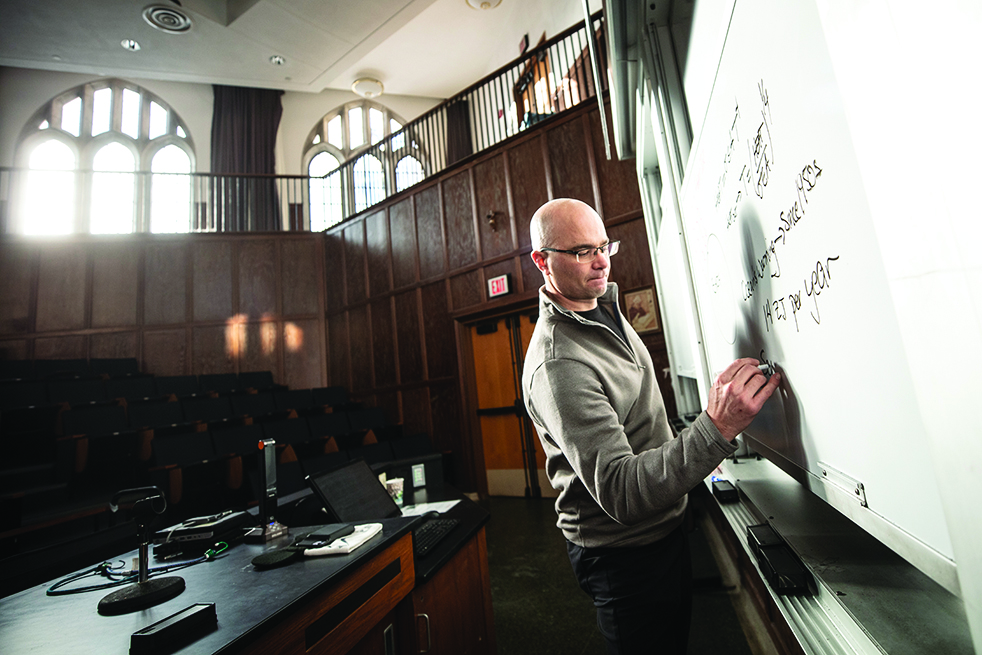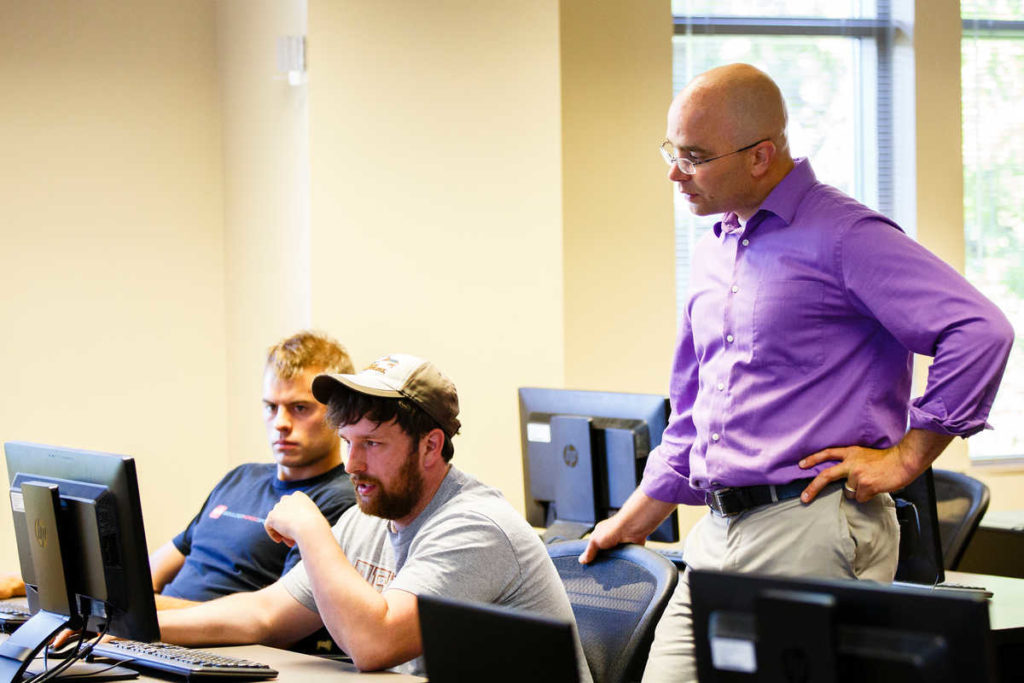If you happen to be on the north campus in St. Paul this morning, look high, or you might miss a leap forward the University of St. Thomas is making toward greater environmental responsibility. If the snowfall cooperates, 20 solar panels will be installed on the rooftop of Brady Hall first thing today.
The panels are silicon photovoltaic, or PV, modules, and have a 25-year guarantee.
The structural steel frame used to support the panels was installed on the roof yesterday, coincidentally, the same week Hourcar service began at St. Thomas.
The unofficially named UST Solar Initiative, a team comprised of St. Thomas students Brian Dahl, David Dahl, David Hackworthy, Kamal Mohamed and Petros Paulos, was the driving force behind the proposal that brought the project to fruition. The team received guidance from Dr. Paul Lorah, Geography Department, and additional help from students in the spring 2008 Environmental Studies 151 class.
Funds from the St. Thomas' Beverage Committee helped to purchase the panels.
"We wanted to help the university go carbon neutral, and solar panels seemed like a very visible way to show that UST is starting to work toward offsetting our carbon emissions," Lorah said.
According to an audit of the university's greenhouse gas emissions conducted last year by Bob Douglas, coordinator of recycling and receiving, the university puts out 72,000 metric tons of carbon per year.
One result of the audit was Father Dennis Dease's signing of the President's Climate Commitment. Dease is president of St. Thomas.
Exactly how much power will the panels collect? Brian Dahl said they will generate enough electricity each month to power a small house. Dahl believes the panels' significance reaches beyond a mere money saver, but that they are "a symbol of St. Thomas' beginning effort to going green."
Members of the initiative said the solar energy collected by the panels cannot be estimated this early; however, once they are installed, the team, with environmental studies' students, will track the energy produced by the panels. The initiative also will track the energy consumption of individual campus buildings on an ongoing basis, beginning with Brady Hall.
Once it is determined how much money the panels save in electricity bills, half of the saved value will fund a scholarship for St. Thomas students. The other half will be allocated to the university’s general fund.
“The panels go beyond just saving energy,” Dahl said. “There’s a huge educational component. … They’ll give students experience with the technologies we’re going to be living with once we leave the school.”
The Geography Department already has developed labs for environmental studies students, which include climatology students creating weather-prediction models, Lorah said.
Hackworthy thinks of this project as a “jumping-off point for the team to push for not only solar power (but a range of) sustainability efforts at St. Thomas,” such as establishing the university’s first LEED-certified building, advocating to replace retired university-owned cars with hybrids and continuing to educate students on sustainability.
While an exciting prospect, the solar panels, Lorah believes, are not a solution, but a start. "The solar panels are good, but we also need to focus on energy efficiency," he said. "Solar panels aren't enough if you have single-pane windows in Aquinas Hall."
Lorah added that this first batch of panels will act like an endowment, generating "a steady stream of lowered costs (in the form of) electricity the university doesn't have to buy."






